—ENGLISH-ANATOMY UNIT 2. (PART : 1)THE CELL
THE CELL:
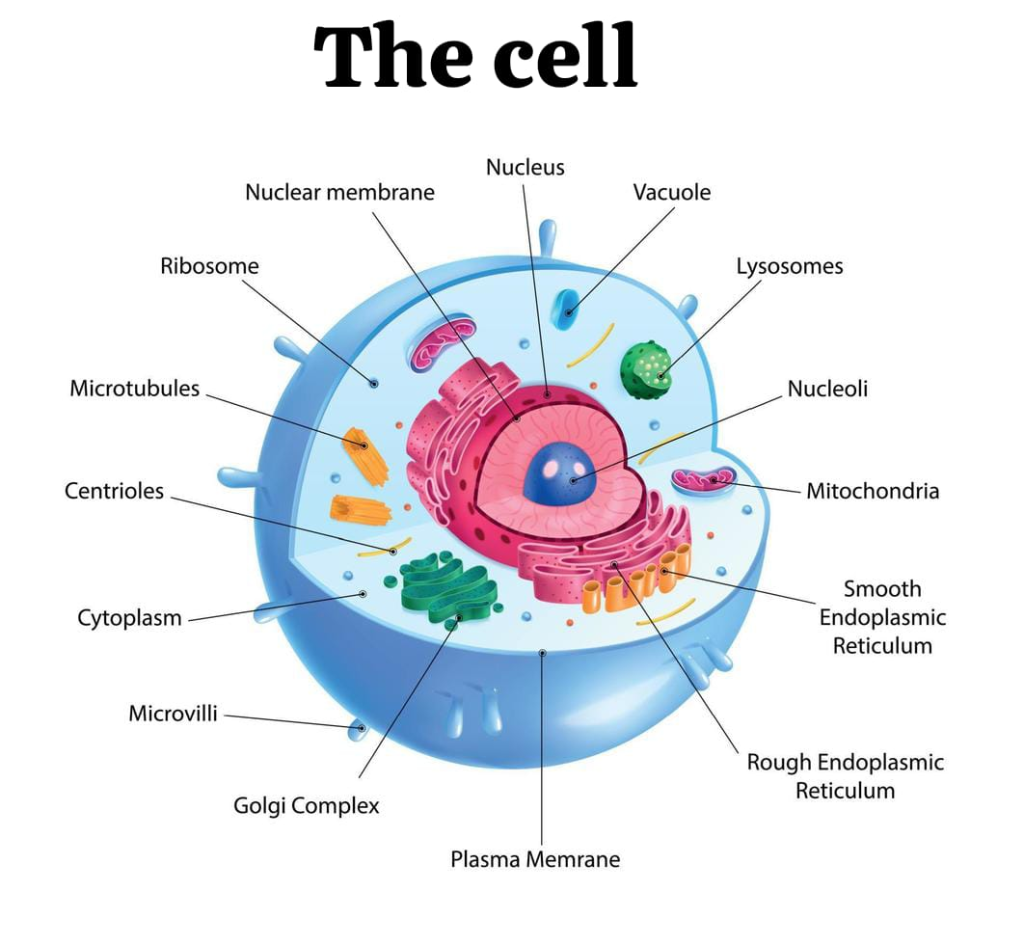
Cell is the smallest unit of the human body A small microscopic structural and functional unit. The cells in it are important for the functioning of every organ in the body. Only with the functioning of these cells can every organ function normally. There are many different types of cells in the body. Here we will study the basic cells of the body and their structure.
The components in the cell are as follows:

- Cell membrane
- Nucleus
- Cytoplasm
- Protoplasm
- Mitochondria
- Golgi apparatus
- Ribosome
Endoplasmic reticulum (smooth endoplasmic reticulum and rough endoplasmic reticulum)
Write the structure and functions of the cell:

- A cell is the basic functional unit of the human body and It is the structural unit. It is the main functional unit.
- A cell is defined as a mass of protoplasm. Inside the cell are organelles which are covered by a plasma membrane.
- In the human body, the fusion of the ovum and sperm results in the formation of a zygote. The growth of this zygote and cell division results in the formation of the human body.
- The liquid part inside the cell is defined as cytoplasm. Which contains many organelles.
The structure of the cell is as follows:

Plasma membrane
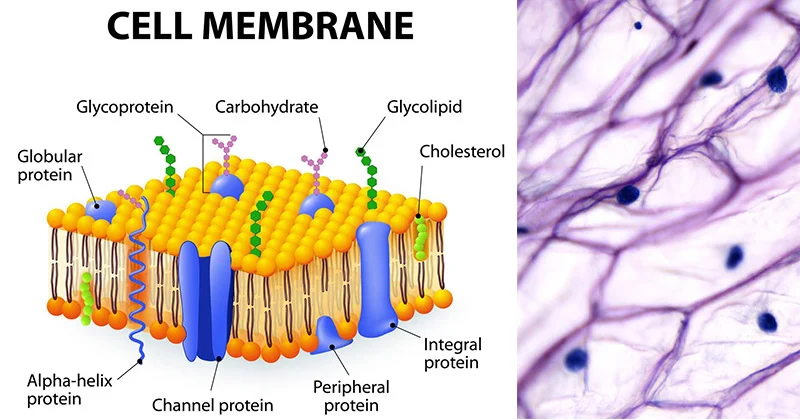
- The membrane surrounding the cell is called the plasma membrane. This membrane has selective permeability (movement of only selected substances). Due to which some substances can enter the cell and some substances can go out of the cell. Thus, the cell maintains the structure of its cytoplasm through this membrane.
- The plasma membrane is a double layer membrane made of phospholipids. It functions to protect the cell’s organelles and to give the cell its shape.
Nucleus
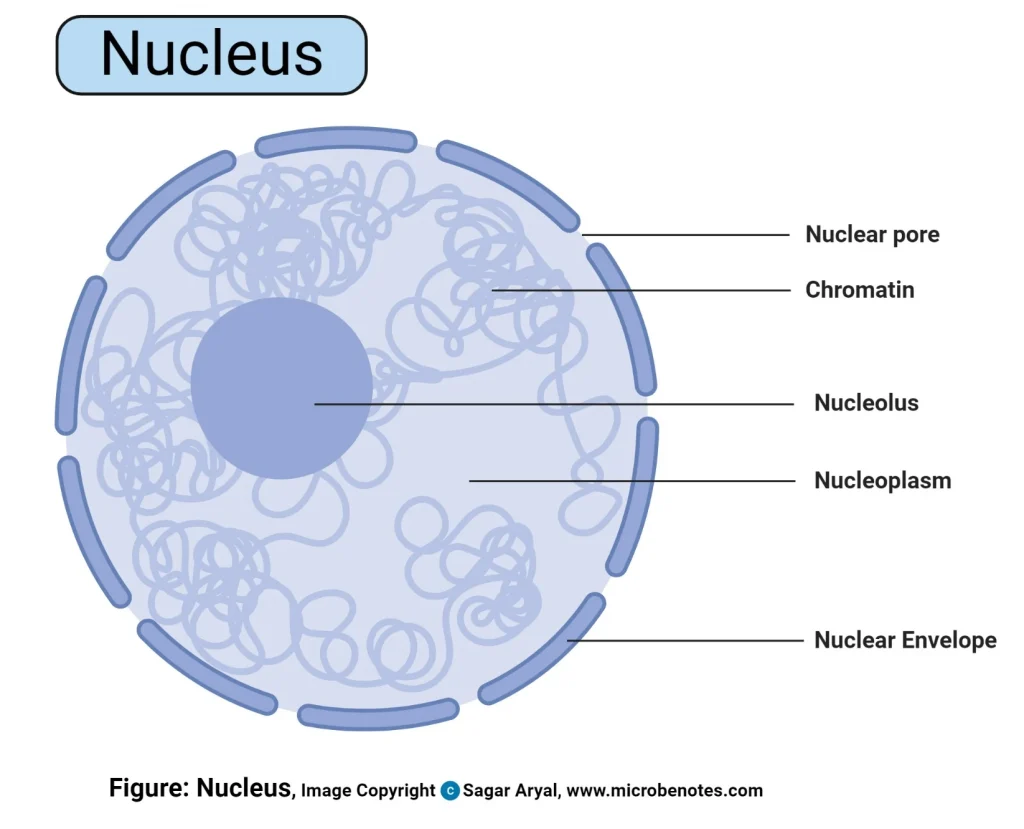
- The nucleus is located in the center of the cell. It contains a liquid called protoplasm. The nuclear membrane surrounds the nucleus. This membrane also has selective permeability. The nuclear membrane partially separates the cytoplasm and protoplasm. The nucleus controls all the activities inside the cell and only with its help can the cell remain alive.
- Inside the nucleus are thread-like proteins called chromatin. This chromatin is converted into chromosomes during cell division and performs the function of cell division.
- These chromosomes inside the nucleus are responsible for the hereditary characteristics of the person. Chromosomes are found in pairs of 23 in the cells of the human body. These chromosomes are called 22 pairs of ordinary chromosomes while 1 pair is called sex chromosomes.
Mitochondria
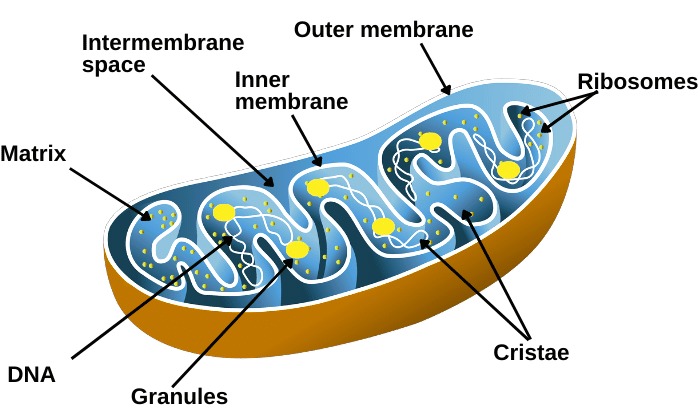
- Mitochondria are rod-shaped structures that are located in the cytoplasm of the cell. They are surrounded by a double membrane, the structure of which is similar to the plasma membrane. The outer layer of this membrane is a smooth layer and the inner layer is highly folded. This series of folds is called Cristae.
- These cristae contain enzymes that release ATP. That is why mitochondria are called the powerhouse of the cell.
Ribosome

- That cytoplasm There are small granules in the nucleus. They are made up of proteins and RNA. They perform the function of protein synthesis from amino acids. Some ribosomes are free-floating in the cytoplasm, while others are attached to the surface of the endoplasmic reticulum.
Endoplasmic Reticulum

It is a series of interconnecting membranes or canal-like structures. Which connect one structure of the cytoplasm to another. Two types are found.
1. Smooth endoplasmic reticulum:
Its surface is smooth. It functions in steroid hormone and lipid synthesis. It also helps in detoxifying some drugs.
2. Rough endoplasmic reticulum:
Its surface is rough. Ribosomes are present on its surface. These ribosomes perform the function of protein synthesis.
The endoplasmic reticulum also helps in transporting substances from one place to another in the cytoplasm of the cell.
Golgi Apparatus
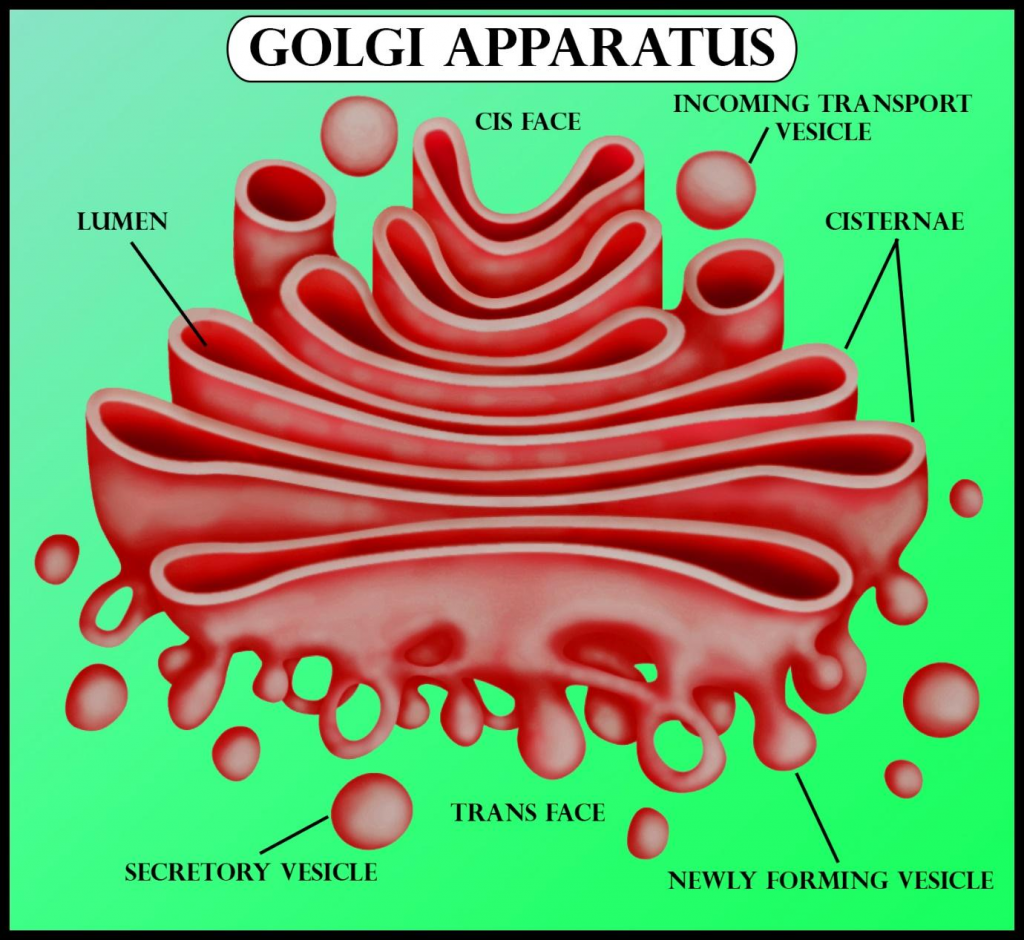
- The Golgi apparatus is a bag-like structure with four to eight folds. These folds are stacked on top of each other. The ends of this structure form a pouch-like structure called cisterna. Proteins synthesized by ribosomes are collected and stored in the form of secretory vesicles at the ends of these cisternae. When needed, these secretory vesicles release the protein into the cytoplasm. The Golgi apparatus is a structure located near the nucleus.
Lysosome
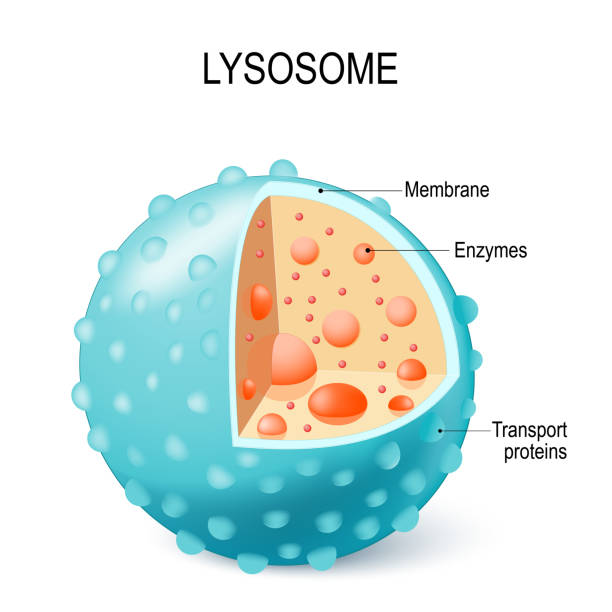
- Lysosomes are a type of secretory vesicles that are secreted by the membrane of the Golgi apparatus. These lysosomes contain certain enzymes that work to break down certain large molecules present in the cytoplasm of the cell. They work to protect the cell from foreign material and microorganisms. These lysosomes also work to remove waste material accumulated inside the cell.
- The cytoplasm of the cell also contains a sun-shaped centrosome, which plays an important role in cell division.
- In addition, the cytoplasm of the cell also contains a network of microfilaments and microtubules, which work to maintain the shape of the cell and to protect and support the structure of the cell.
Functions of the Cell:
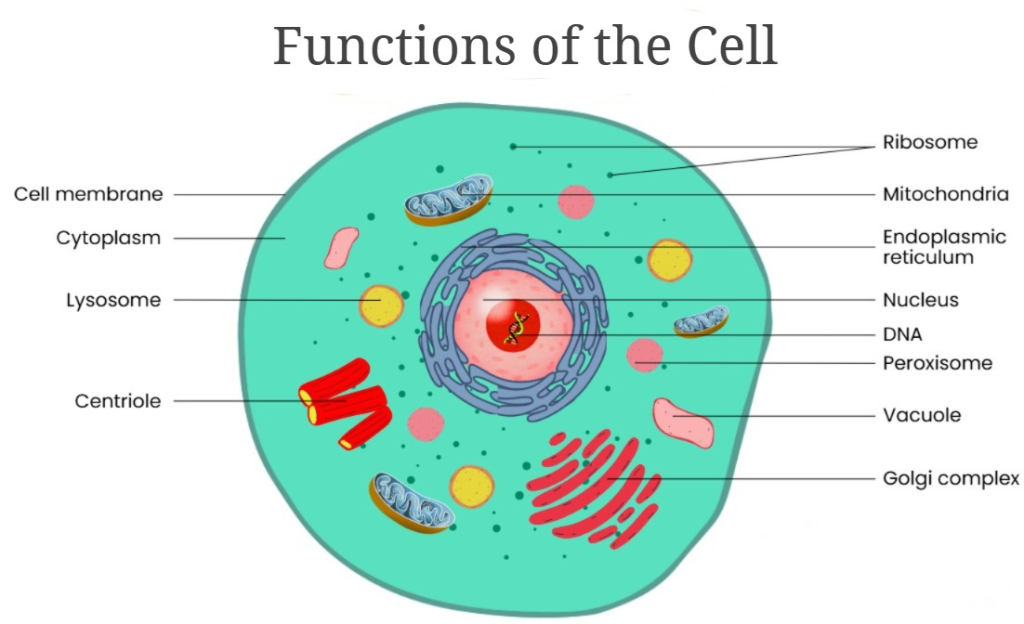
- Cells have the property of movement, with the help of which the cell can move from one place to another. This function of the cell is called Motile function or Mobility.
- The cell uses oxygen and performs cellular activity. Finally, the carbon dioxide accumulated in the cell goes outside the cell. Thus, the cell performs the function of Respiration as it exchanges gases.
- The cell obtains nutrient materials from the blood and performs the cell’s activity, i.e. the cell performs Nutritional function.
- The waste products accumulated inside the cell are released outside the cell through the plasma membrane. The cell performs the excretory function.
- The cell transports the nutrient materials inside it from one cell to another and from one place inside the cell to another, so the cell also performs the function of circulation and transportation.
- Since the cell has the property of multiplying and dividing, it performs the function of reproduction.
- The cell performs the function of destroying microorganisms and pathogens due to the enzymes present inside it, so it Performs the function of phagocytosis.
- The cell has the ability to receive nerve impulses and pass them forward, therefore it performs the function of irritability and conductivity. This function of the cell is mainly seen in nerve cells.
Cell Division:

- Cell division means an increase in the number of cells. Inside the human body, mainly the ovum and sperm combine to form a zygote. This zygote undergoes cell division and its number increases.
- Cell division occurs and forms tissues, different tissues combine and form an organ, such organs come together to form a system, many such systems come together to function in the human body and the human body is managed.
- Cell division is necessary for the normal functioning of the human body. This cell division occurs mainly in two ways.
1. Mitosis:
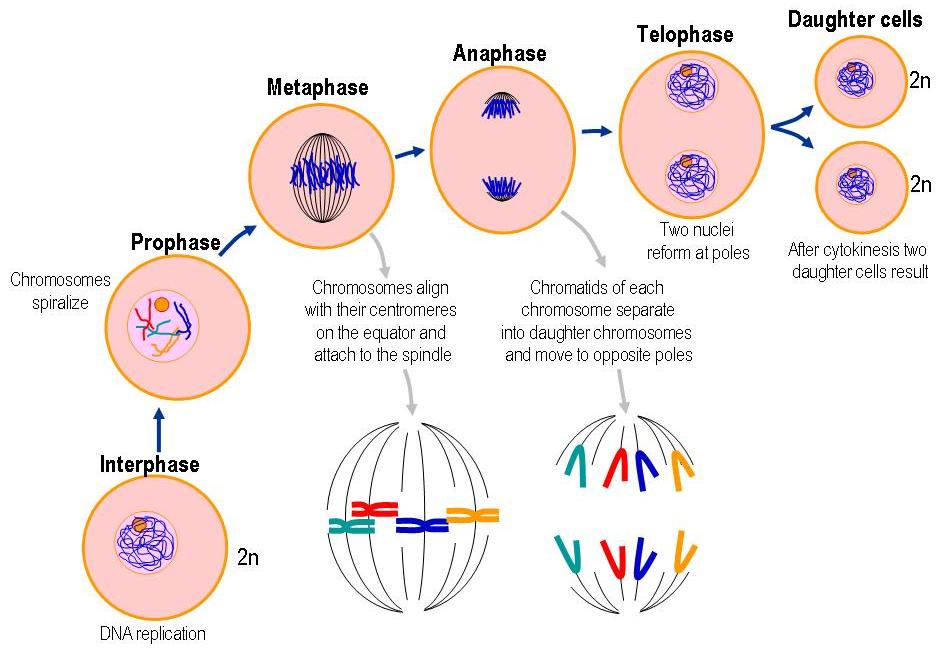
Mitosis is a cell division that occurs in all parts of the body. It is essential for the growth of the body.
Mitosis is a cell division in which two identical daughter cells are produced from a parent cell. The divided cell has the same number of chromosomes as the parent cell. The process of mitosis cell division is divided into the following phases.

Prophase:
This is the first phase of mitosis cell division in which the parent cell matures for cell division. First, the membrane surrounding its nucleus is destroyed and the chromatin in the nucleus is converted into chromosomes. During this time, the centrosomes in the cytoplasm are pulled towards the north and south poles.
Metaphase:
This is the second phase of mitosis cell division. In which the centrosomes are pulled towards both the North and South poles and the chromosomes are arranged in a row in the middle of the centrosomes, i.e. in a rod shape.
Anaphase:
This is the third phase of mitosis cell division. In which the centrosome strands are pulled towards each other, the chromosomes arranged in a rod shape in the middle are divided equally towards the North and South poles and the strands break in the middle. Thus, identical chromosomes are sold to both centrosomes. The length of the cell also increases.
Telophase:
This is the last stage of mitosis cell division. In which the nuclear membrane is formed towards both the north and south poles. The chromosomes are arranged inside the nuclear membrane. The cytoplasm remains the same on both sides, from which all the organelles of the cell begin to form. Due to excessive stretching in its length, the cell breaks in the middle and two daughter cells are formed from one parent cell.
46 chromosomes are formed in both these daughter cells. Cytoplasm and all organelles are formed.
Thus, at the end of mitosis cell division, two daughter cells similar to it are formed from one parent cell. In this way, cell multiplication and cell division take place.
2. Meiosis cell division:
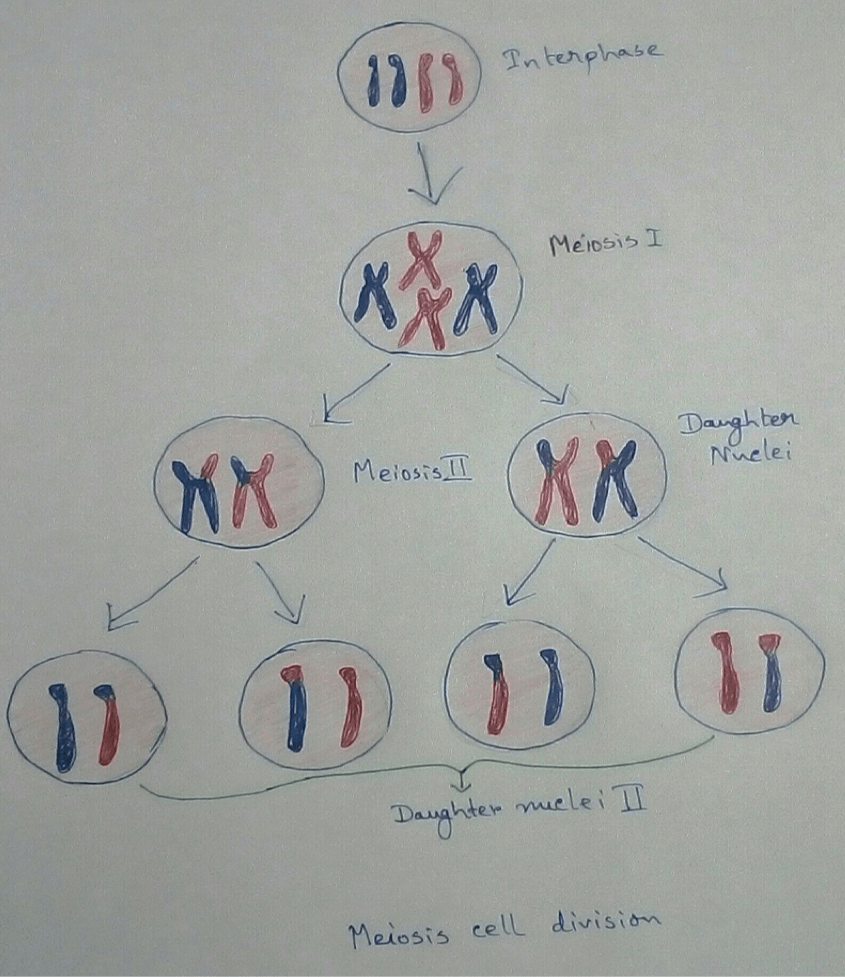
Meiosis cell division is only seen in the division of sex cells.
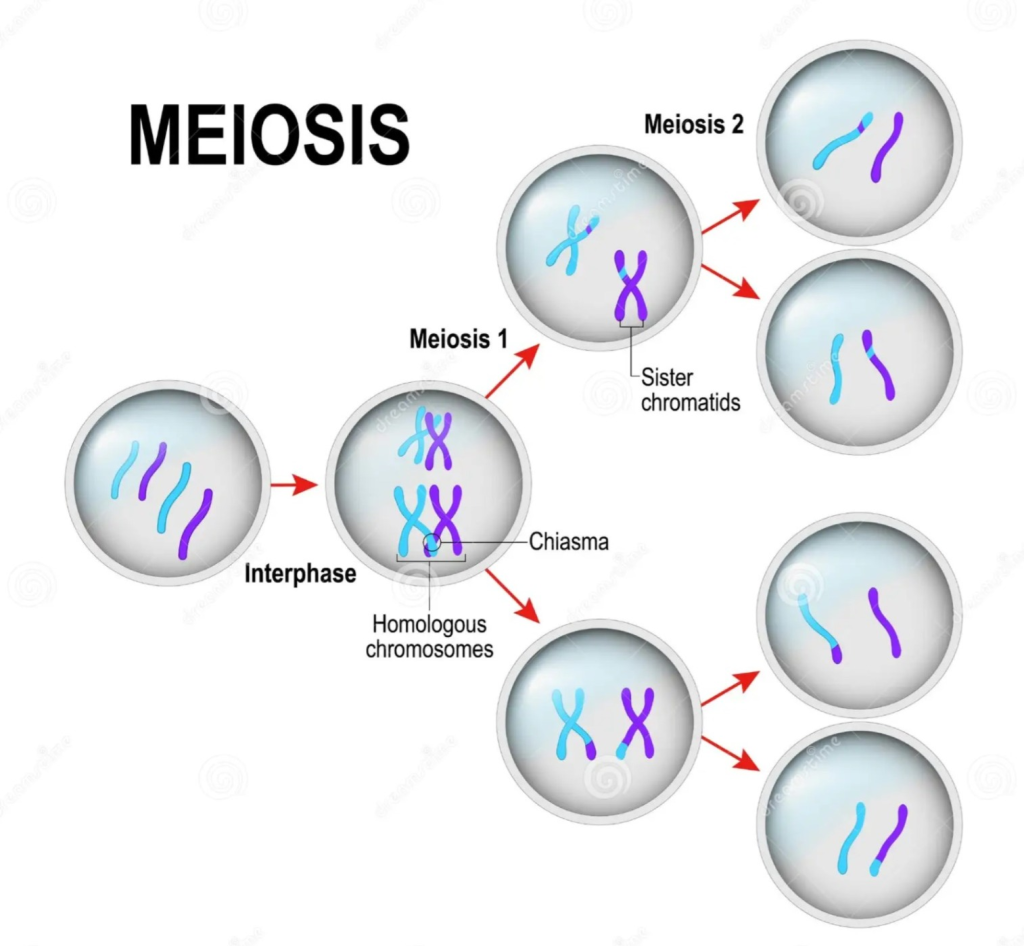
In which the fusion of the male germ cell sperm and the female germ cell ovum produces a new cell called a zygote. This zygote contains 23 chromosomes from both the male and female sides. Due to the cell division of this zygote, the sex of the child is determined. If the X chromosome is found from both the male and female, then the female child is born and if the X and Y chromosomes are found from both the male and female, then the male child is born.
Thus, Meiosis cell division determines the sex of the child, which is seen only in sex cell division.
Mutation (Mutation):

When a change is seen in the genetic structure of any cell, it is called a mutation. There are many reasons for this alteration
Mutation mainly causes changes in the structure of microorganisms and leads to disease progression and pathological changes in the body.
E.g. The pathogens of Covid diseases mutate repeatedly and spread the disease repeatedly.
